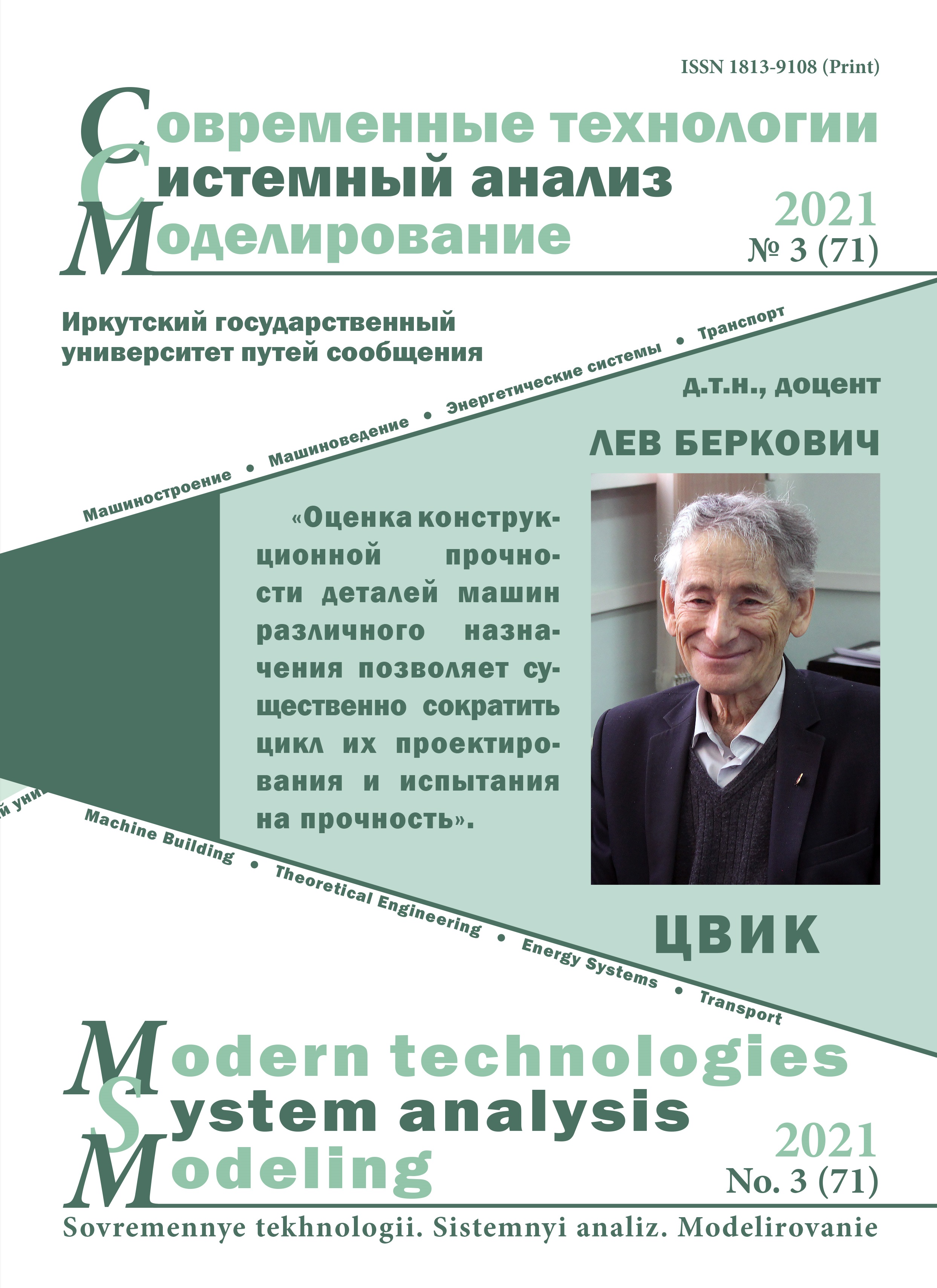Creation of a biplan type uav model using a genetic algorithm in flight to help in solving the problem of fires in the Irkutsk region
Keywords:
uav, biplane, 3D modeling, fires, floods, genetic algorithm, full-scale test modelAbstract
Since the end of July 2019, a sharp increase in the area of wildfires has been recorded in Siberia. The most difficult situation is in the Irkutsk region, where some areas suffer from floods, while others - from wildfires. In order to more effectively deal with natural disasters occurring on the territory of both the Angara region and Russia as a whole, the project is proposed for the development of unmanned aerial vehicles (UAVs) capable of operating autonomously and performing a number of tasks to collect information. The ecological situation in general in the catchment area of Lake Baikal continues to worsen every day. Not only natural disasters (forest fires and floods), but also unauthorized solid waste dumps, poaching, and tourist pollution of Lake Baikal pose a large-scale threat to the ecology of the drainage basin. Of course, constant and operational environmental monitoring of Lake Baikal drainage basin condition seems urgent, making quite useful the created model range of UAVs, including the model of a quadrocopter-ecologist, developed by our team earlier. This article is devoted to the design of a UAV model штеутвув to help monitor forests and water areas of the Irkutsk region. The design was carried out taking into account the fact that the device must operate in adverse climatic conditions and the on-board computer is capable of working in the interraction with a neural network. The choice of the UAV concept is substantiated - a biplane with swept wings. Computer three-dimensional modeling (CAD) is carried out in the universal program Autodesk Fusion 360. The work presents a drawing of the resulting computer model. The created CAD model will allow obtaining the drawings and G-code necessary for creating full-scale models for 3D printing and the possible use of a milling and laser machine tools. A description of the process of creating a test model and equipping it with electronics is given. The UAV software will be based on a genetic algorithm. The architecture of the neural network was chosen and the necessary mathematical calculations were carried out.
References
Birkhoff G. Lattice Theory. N.Y. : American Mathematical Society, 1967. 418 p.
Fire Detection in Trains Using Image Analysis: A Survey and a Novel Approach. URL: https://www.politesi.polimi.it/bitstream/10589/142862/3/2018_10_CINAR_DILARA.pdf (дата обращения: 15.01.2021).
Kuzmin O.V., Khomenko A.P., Artyunin A.I. Development of special mathematical software using combinatorial numbers and lattice structure analysis // Advances and Applications in Discrete Mathematics. 2018. Vol. 19, Iss. 3. P. 229–242.
Kuzmin O.V., Khomenko A.P., Artyunin A.I. Discrete model of static loads distribution management on lattice structures // Advances and Applications in Discrete Mathematics. 2018. Vol. 19, Iss. 3. P. 183–193.
Mesarovi M., Mako D., Takahara Y. Theory of Hierarchical Multilevel Systems. New York : Academic Press, 1970. 294 p.
Ле Динь Дат, Руденко М.Г., Данеев А.В. БПЛА для проведения мониторинга объектов нефтегазовой промышленности // Современные технологии и научно-технический прогресс. 2018. Т. 1. С. 75–77.
Лесные пожары в России. Статистика и антирекорды. URL: https://tass.ru/info/6712527 (дата обращения: 20.02.2021).
Saaty T.L. The Analytic Hierarchy Process: Planning, Priority Setting, Resource Allocation. New York : McGraw-Hill, 1980. 287 p.
Stanley R.P. Enumerative Combinatorics. Vol. 1. Cambridge: Cambridge University Press, 1997. 335 p.
Zakharov D.V., O.V. Kuzmin The application of relational interactive logic in control operation problems by the example of monitoring the server equipment of transport systems // IOP Conference Series: Materials Science and Engineering. 2020. Vol. 760. P. 1–8. DOI: 10.1088/1757-899X/760/1/0120589.
Балагура А.А., Кузьмин О.В. Обобщенная пирамида Паскаля и частично упорядоченные множества // Обозрение прикладной и промышленной математики. 2007. Т. 14, Вып. 1. С. 88–91.
Классификация БПЛА и системы их интеллектуального управления / С.И. Федоров, А.В. Хаустов, Т.М. Крамаренко и др. // Открытые информационные и компьютерные интегрированные технологии. 2016. № 74. С. 12–21.
Кузьмин О.В., Старков Б.А. Иерархические структуры типа треугольника Паскаля и построение навигационных маршрутов // Актуальные проблемы науки Прибайкалья : сб. ст. Иркутск : Изд-во ИГУ, 2020. Вып. 3. С. 119–123.
Кузьмин О.В. Обобщенные пирамиды Паскаля и их приложения. Новосибирск : Наука. Сиб. изд. фирма РАН, 2000. 294 с.
Кузьмин О.В., Серёгина М.В. Плоские сечения обобщенной пирамиды Паскаля и их интерпретации // Дискретная математика. 2010. Т. 22, Вып. 3. С. 83–93.
Лавлинская А.А., Филь Г.А., Камнев М.Д. Создание модели квадрокоптера-эколога // Прикладные вопросы дискретного анализа : сб. науч. тр. / под ред. О.В. Кузьмина. Иркутск : Изд-во ИГУ, 2020. Вып. 5. С. 78–83.
Кузьмин О.В. Роль дискретной математики в научной работе старшеклассников // Компьютер в школе. 2000. № 2 (16). С. 12–14.
Кузьмин О.В., Лавлинская А.А., Филь Г.А., Камнев М.Д. Обнаружение лесных пожаров с помощью беспилотных летательных аппаратов // Математика, ее приложения и математическое образование (МПМО-20) : материалы VII Междунар. конф. Улан-Удэ : Изд-во ВСГУТУ. 2020. С. 134–136.
Пеллинен В.А., Светлаков А.А. Применение беспилотников при анализе криогенных форм рельефа долины реки Сенца Окинского плоскогорья // Изв. Иркут. гос. ун-та. Сер. Науки о Земле. 2020. Т. 31. С. 58–67.
Пятаева А.В. Сегментация областей задымления на видеопоследовательности // Вестник СибГАУ. 2016. № 3. С. 625–630.
Стасенко А.Л. Физика полета. М. : Наука, 1988. 144 с. (Б-чка «Квант». Вып.70.). С. 18–22.
Хмельницкая К.А. Распознавание пламени с помощью оптоэлектронных систем в судостроении // Тр. Крылов. гос. науч. центра. 2019. Спец. вып. 2. С. 277–281.
Обнаружение лесных пожаров с помощью беспилотных летательных аппаратов / О.В. Кузьмин, А.А. Лавлинская, Г.А. Филь и др. // Математика, ее приложения и математическое образование (МПМО'20) : материалы VII Междунар. конф. г. Улан-Удэ, 2020. С. 134–136.


